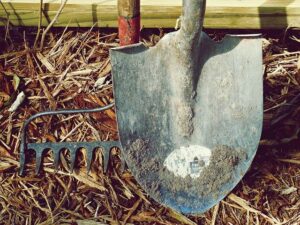A transitional time of the year, autumn represents an incredibly important period for your lawn. After the heat and stress of the summer, it serves as a chance for your turf to recuperate and strengthen itself as the weather cools and the days get shorter. Your lawn will need all the strength it can get to survive the winter, and your lawn care in autumn is pivotal to this long-term health.
So what should an astute lawn owner think about when caring for their lawn in autumn? Here are a few quick tips that’ll help to make the most of this mild time of year.
Fix the bare patches
The summer heat of Australia can challenge the hardiest of Aussie grasses, but when it’s combined with an extended dry spell, perhaps even coupled with local water restrictions, your lawn can begin to wilt and thin out, eventually developing brown patches. The cooler temperatures and steadier rains of autumn will bring welcome relief to your turf, but you shouldn’t expect that the weather will be all that is required to get your lawn looking as good as new.
Summer bare patches will need a bit of extra work if they are to get back to looking their best. The following procedure will have your lawn bouncing back in no time:
1) Aerate the patch, this will allow both oxygen and moisture to penetrate the surface far easier.
2) If your soil is clay or otherwise firm, top dress with 1cm of sandy loam in order to create better conditions for new grass to grow in.
3) Overseed the area with the amount of seed recommended for your particular grass variety by McKays.
4) Spread a nitrogen-heavy slow release fertiliser over the reseeded area.
5) Water the fertiliser and seeds in, being sure to keep the area damp for the next 2-3 weeks.
Give it a feed
While fertiliser will play an important role in any post-summer reseeding efforts, autumn just represents a great time to fertilise your lawn no matter what its condition.
Its combination of milder temperatures, greater rainfall and still-warm soils makes autumn a peak growing period for many grasses. In order to sustain this growth and get your lawn as healthy as it can possibly be in the lead-up to winter, it’s wise to sprinkle on a helping of slow release fertiliser.
Choose a balanced fertiliser and water it in thoroughly. The best fertiliser for your lawn will depend on the variety of the grass, and the condition that it’s in. The friendly team at McKays will be able to help you make the perfect autumn fertiliser selection.
Clear the debris
When you close your eyes and think of autumn you’ll undoubtedly picture red, brown and yellow leaves gracefully falling from the trees. While certainly beautiful, the shedding of leaves can play havoc with the health of your lawn.
A build-up of autumn debris on your lawn will deny the grass blades sunlight, stopping them from photosynthesising and subsequently gaining strength. An excess of plant matter can create brown and bare patches, just as an inflatable pool or a table on your lawn can. To avoid this patchiness it’s wise to rake leaves and other debris from your lawn regularly, and allow it to bask in the warmth of the autumn sun as much as possible.
Depending on where in Australia you reside, autumn could mean a dry and hot period, a quickly cooling and precipitously wet period, or simply the transition from wet season to dry season. But whatever your particular circumstances, autumn will always be a pivotal time of year for your grass. And by putting in the effort to treat your lawn well this autumn, you’ll be far more likely to have a healthy patch when the season rolls around again next year.
For any other autumn lawn maintenance queries, don’t hesitate to contact the friendly team at McKays.



